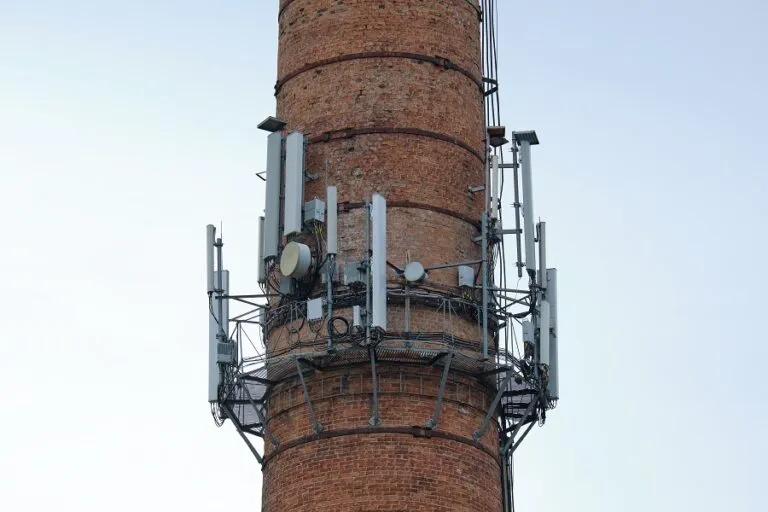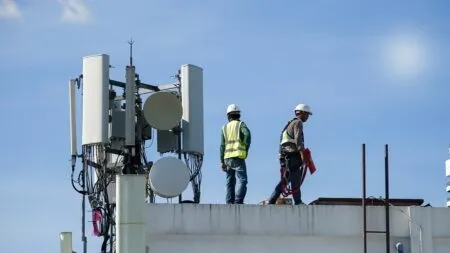Incorporating the dangers of (RFR) Radio Frequency Radiation into the context of electrical hazards in Australian workplaces adds an important dimension to the conversation on occupational health and safety. RF radiation, a type of (EMF) Electromagnetic Field Radiation, is increasingly prevalent in modern workplaces through the use of wireless technologies, mobile phones and other RF emitting devices. Understanding its implications is crucial for ensuring comprehensive workplace safety.
The Invisible Threat: RF Radiation in the Workplace
Radio frequency radiation falls within the electromagnetic spectrum and is emitted by a wide array of devices, including cellular phones, 3G, 4G and 5g stations, Wi-Fi routers as well as microwave ovens. In industrial settings, RF is also generated by radio communication systems and specialized industrial equipment. Despite its invisibility, RF radiation has the potential to pose significant health risks, particularly when exposure exceeds recommended limits.
Health Impacts of RF Radiation
The health effects of RF radiation have been the subject of extensive research and debate. Short-term exposure to very high levels of RF radiation can result in thermal effects, causing tissue damage through heating. While most workplace environments are regulated to prevent such extreme exposures, concerns about the long-term effects of lower-level exposure persist. Studies have explored potential links between RF radiation and various health issues, including cancer, cognitive dysfunction, and adverse effects on reproduction. However, the consensus among health organizations is that more research is needed to fully understand these risks.
Regulatory Framework and Guidelines
In Australia, the safety standards for RF radiation exposure are set by the Australian Radiation Protection and Nuclear Safety Agency (ARPANSA) and the Australian Communications and Media Authority (ACMA). These standards are designed to protect both the public and workers from harmful exposure to RF radiation. The limits are based on guidelines provided by the International Commission on Non-Ionizing Radiation Protection (ICNIRP), which recommend maximum exposure levels for various frequencies to prevent adverse health effects.
Mitigating RF Radiation Risks in the Workplace

Employers have a responsibility to manage RF radiation hazards in the workplace through a combination of engineering controls, administrative actions, and personal protective equipment (PPE). This includes:
- Assessment and Monitoring: Regularly assessing RF radiation levels, especially in areas where RF-emitting devices are used extensively.
- Engineering Controls: Implementing physical barriers or distance restrictions to reduce exposure. This may involve redesigning workspaces or employing shielding materials to block or absorb RF radiation.
- Administrative Controls: Establishing safe work practices and policies, such as limiting the duration of exposure to RF sources and providing training on RF safety, which may extend to covering some aspects in workplace online inductions.
- Personal Protective Equipment: In situations where engineering and administrative controls cannot sufficiently reduce exposure, appropriate PPE, such as RF protective clothing, may be required.
The Role of Technology and Awareness
Advancements in technology offer new tools for monitoring and reducing RF radiation exposure in the workplace. Devices equipped with sensors can provide real-time data on RF levels, enabling more precise management of exposure risks. Additionally, fostering a culture of safety and awareness around RF radiation is critical. Educating employees about the sources of RF radiation, its potential health effects, and ways to minimize exposure can empower them to take an active role in their own safety.
Rising RF Radiation Hazards
The emergence of RF radiation as a potential occupational hazard necessitates a comprehensive approach to workplace safety that encompasses both traditional electrical hazards and the invisible risks posed by electromagnetic fields. By adhering to regulatory standards, implementing effective risk management strategies, and promoting a culture of safety and awareness, employers can safeguard their workforce against the multifaceted dangers of the modern workplace.
Incorporating RF radiation into the broader discourse on electrical safety underscores the evolving nature of workplace hazards in the digital age. As technology continues to advance, so too must our strategies for protecting workers, ensuring that safety remains at the forefront of industrial progress in Australia and beyond.
EMF Shielding may also assist in lowering Radio Frequency Radiation exposure and there are a growing number of companies offering such a service.



